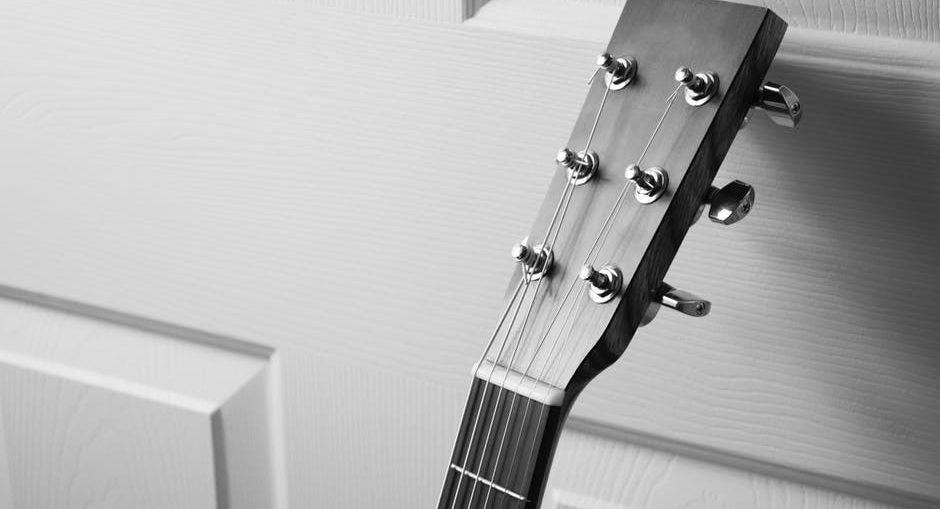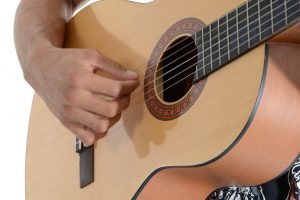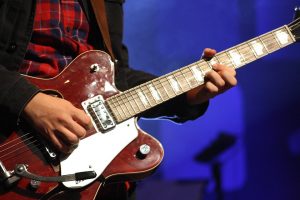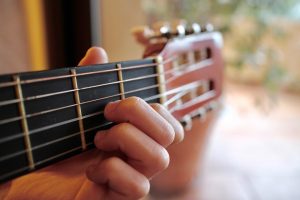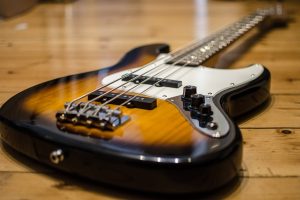
Playing the guitar can be fun, but one question lingers on if you are yet to master this art. Where should you start if you have an interest in playing the guitar? Music experts will tell you that learning guitar chords as you strum songs is the initial phase to successful guitar playing. Probably, you are not alone in the quest to learn how to play the guitar. Thousands, if not millions of enthusiasts around the world have a myriad of reasons as to why they wish to learn to play the guitar.
Don’t we all wish to play catchy music, especially with the accompaniment of the guitar? If you have all along wanted to play the guitar, then you will find this guide invaluable. We will take you through the most important beginner guitar chords you need to practice.
E minor (Em) Chord
This chord should be the first to learn, and it is known for its ultimate simplicity – you only need two fingers to play it. As a basic chord, E major is used almost in every song, all the time. Extra keenness is needed so that either of your fingers does not touch any open string so that the chord rings as desired. Then, you need to strum all the six strings.
Note that in particular situations, reversing the position of your finger makes sense as your second and third fingers rest on the fifth and fourth strings respectively.
C major
C should be your second chord to learn. Here, the emphasis is placed on strumming the top five strings. As a reminder, go for the top five strings with the highest sound, not those farthest from the floor. If you use charts as guidance, the X on any chord implies you need to mute it. This chord has considerably straightforward fingering although you must pay attention to curling the first finger for the proper open ringing of the first string.
A major
This chord is achievable through two different fingerings. However, both are important in various contexts. You will use three fingers all on the second fret to achieve the initial basic A guitar chord. However, if your hands are large, this might be troublesome. You may then settle for the variant A major chord by barring across the fourth, third, and second strings with your first finger. To mute the first string, you will need to have your finger slightly bent back on its first joint.
D major
The D major is another troublesome chord for beginners. The good news is that you will find it manageable when you memorize this guide. Failure to curl your third finger properly as you strum the second string is a common mistake in playing this chord. This failure results in an improper ringing of the first string. Remember to avoid the fifth and sixth strings as you play the top four for a D major. If you do this, then you are on your way to writing catchy lyrics and playing the chords to the desired flavor.
E major
Move the A minor chord to the fifth, fourth, and third strings. What do you have? The E major chord. Alternatively, you can achieve this chord by introducing the first finger to the third string’s first fret.
For proper second string ringing, ensure that you properly curl your first finger by holding down the third string’s first fret. You might find it necessary to reverse your third and second fingers as you try playing this chord. Find your easiest alternative, and enjoy playing the guitar.
G major
By now, you must have noted that your ability to curl your fingers determines how appropriate the chord will sound. Haven’t you? This is the case with the G major chord. For the fourth open string to ring clearly, you must concentrate on having your first finger curled.
Play the G major by using any of your fourth, second, or third finger on the first, fifth, or sixth string respectively. This configuration ensures that movement to C major is a lot easier.
A minor
If you happen to have mastered the E major, then you as well have known how to play the A minor. You simply need to move the whole E major chord shape over a string. Ensure that you curl the first finger to allow the open first string to ring clearly. As you strum the A minor, the open sixth string should not be played.
The A minor chord also shares two fingers with the C major. As you switch to A minor from C major, your third finger should be lifted up then moved to the second fret of the third string. The third finger can freely strum the required string when your second finger is slightly scooted back.
It is not uncommon to reverse your third and second fingers as you play this chord. Either way, you will end up with a clear A minor chord sound.
D minor
This chord is also fairly simple. Do not fall under the group of beginner guitarists who find it troublesome. Be keen as you third finger rests on the second string. It is wise to curl this finger properly so that the first string can ring right. Here, you only need to strum the top four strings.
If you learn these chords by applying them to music, you will enhance your mastery. The best way is starting off with songs which have used three chords. You then can try four-chord songs after you have mastered how to play and switch between chords with comfort.
Focus on these general tips as you practice the above chords;
- Guitar strings should be pressed with the tip of each finger
- All three knuckles must be bent
- Put enough pressure on the strings
- The fingers must be close to frets
- Your finger should not mute the string below the one you are playing
- Do not rest the thumb on top of the guitar neck, but rather on its back
- Ensure clear and clean string note sounds before practicing
- Begin with the G-C-D chord song when practicing
- Try switching between chords
- Make the practice a daily activity
Have a fruitful experience practicing the chords.


